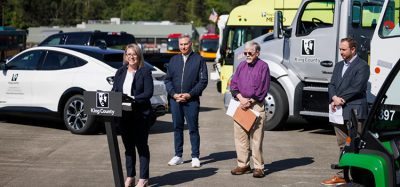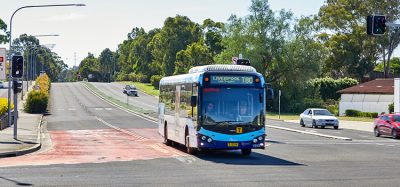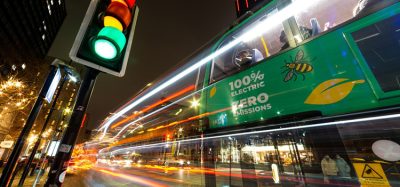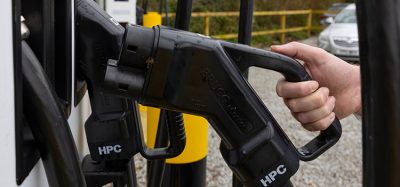Navigating the marketing challenges of multi-city Mobility‑as-a-Service platforms
- Like
- Digg
- Del
- Tumblr
- VKontakte
- Buffer
- Love This
- Odnoklassniki
- Meneame
- Blogger
- Amazon
- Yahoo Mail
- Gmail
- AOL
- Newsvine
- HackerNews
- Evernote
- MySpace
- Mail.ru
- Viadeo
- Line
- Comments
- Yummly
- SMS
- Viber
- Telegram
- Subscribe
- Skype
- Facebook Messenger
- Kakao
- LiveJournal
- Yammer
- Edgar
- Fintel
- Mix
- Instapaper
- Copy Link
Posted: 4 September 2023 | Charles Nichols - Solent Transport | No comments yet
Charles Nichols, Marketing Communications Manager at Solent Transport, takes the time to consider one of the most overlooked aspects of MaaS app development: marketing and promotion. Here, he explains the importance of managing customer expectations and ensuring success through effective MaaS marketing, and highlights that the responsibility to educate users and promote the app must sit with the creators, instead of relying on natural interest.
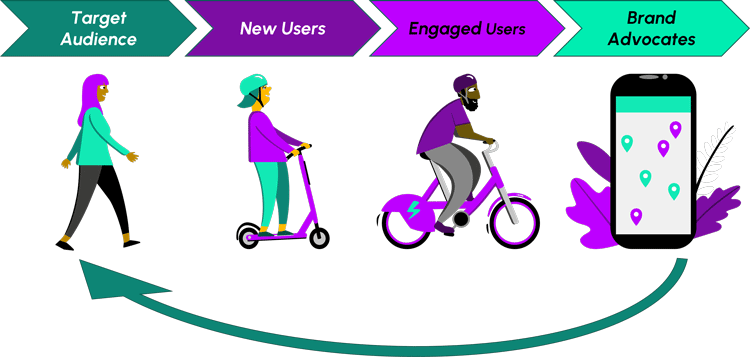

Creating a multi-city Mobility‑as-a-Service (MaaS) platform with a comprehensive range of integrated transport operators and seamless service provision is a significant challenge. But what is just as important, but often overlooked, is how the value proposition of MaaS is presented to customers through the marketing and promotion of the service.
Most customers care little about the complex challenges… of combining access to multiple modes in a single app. The reality is that they will judge the platform by how their actual user experience stacks up against their expectations”
It’s all very well spending long hours developing integrations and building a system that provides the sort of service cohesion that gets transport planners hot under the collar, but the reality is that the end users of MaaS aren’t transport planners. Most customers care little about the complex challenges, behind-the-scenes, of combining access to multiple modes in a single app. The reality is that they will judge the platform by how their actual user experience stacks up against their expectations. So, how should we invest in the marketing of MaaS to manage expectations and ensure success?
Before I continue, it’s worth defining what MaaS means at Solent Transport. Definitions differ depending on who you speak to, or what your region’s transport model looks like. Here’s what Breeze (our MaaS platform) currently offers:
- A mobile super-app delivered by a local government partnership
- Deep integration of transport services provided by private companies with live tracking information and service updates
- Real-time data about transport availability, disruptions, battery charge levels etc.
- Ability to purchase transport tickets, passes and access in-app
- Unlocking of vehicles (e-scooters, rental bikes, car club)
- Journey planning and guidance.
Why should customers care about MaaS?
What is MaaS to a customer? Why should they use it? What advantage does it offer over and above the services that they’re already using? Answering these questions is critical to delivering successful marketing promotion.
For many potential customers, the concept of MaaS is an entirely new one and the majority of the market will view it with healthy scepticism. Aside from a few tech enthusiasts who will download and use MaaS out of sheer curiosity, the responsibility for overcoming the scepticism of the majority rests on the creators. We must take responsibility for both education and promotion – the objective ‘to inform’ should sit at the centre of the communications strategy.


Credit: Solent Transport
What part does branding play?
A compelling brand plays a significant role in highlighting the value proposition of MaaS and underpinning the customer’s understanding of what the product actually does”
A compelling brand plays a significant role in highlighting the value proposition of MaaS and underpinning the customer’s understanding of what the product actually does. At Solent Transport, we’ve spent time working with our local transport authority partners and transport operators to develop the brand, Breeze. Both the product name and logo are designed to highlight simplicity and speed – the central values of MaaS for our customers.
Our logo, reminiscent of a billowing ship’s sails, alludes to transport and movement with a subtle nod to our country’s maritime heritage. Not unintentionally, the two sails also form the letter ‘B’, and the logo is easily replicable. Ease of replication is directly linked to memorability – just think how easily you could sketch out Nike’s logo, or McDonald’s golden arches. Great branding keeps things simple while remaining distinctive, and this is important because our MaaS platform is entering a busy marketplace of transport apps, where distinctiveness and memorability are going to be key to raising awareness.
Our promotional marketing strategy is simple:
- Identify audience segments and adapt our marketing messages to address their needs
- Raise awareness of the product using an engaging brand
- Make the value proposition clear and compelling.
How do we engage customers effectively?
It is more important than ever that organisations engage their customers in timely and relevant ways with a focus on providing added value, and MaaS should be no different”
Where things really get interesting is the channels for promotion that become available when marketing an app. The full suite of marketing channels – digital, programmatic, out-of-home, radio – still have a part to play, but engagement within the app ecosystem should be an important consideration.
Where native transport apps often slip up is by focusing on what the organisation can learn from their users, rather than what they can give back. It’s a false assumption to think that merely providing route planning, tickets or vehicle unlocking constitutes a job well done. Customer expectations have risen beyond simple service provision. It is more important than ever that organisations engage their customers in timely and relevant ways with a focus on providing added value, and MaaS should be no different.
If anything, MaaS should be distinctly different. Where operators’ apps provide access to a single mode, MaaS offers up the holistic transport menu. It becomes even more important then, that provision is made for the customer to build a bespoke app experience that suits their transport requirements, receiving notifications about service changes, discounts and travel information in a manageable fashion.
The nature of Software-as-a-Service platforms is that they offer providers the chance to integrate multiple Application Programming Interfaces (APIs) into the core offering. Put simply, MaaS has the potential to develop beyond the generic product into what economist and professor at the Harvard Business School, Theodore Levitt, defined as the “whole product”. In Geoffrey Moore’s excellent Crossing the Chasm, he states, “There is a gap created between the marketing promise made to the customer – the compelling value proposition [in this case a transport super-app] and the ability of the shipped product to fulfil that promise….the product must be augmented by a variety of services and ancillary products to become the whole product.”
Breeze has opted to integrate a customer engagement platform – sometimes called a Customer Relationship Management (CRM) system – to provide greater insight into the typical activity and transport preferences of different customer segments; allow access to app related communication channels such as push, in-app, SMS and email; and to monitor more closely the effectiveness of these communications in regard to measurable behaviour change, customer lifetime value, in-app behaviour and other key insights.
The analytics and insights available in the customer engagement platform allow for the possibility of sharing information about customer segment behaviour with our partner local authorities and transport operators.
For local authorities, this provides insight into local transport use on a scale that they couldn’t otherwise easily achieve. Information is real-time and shows how customers are engaging with the available infrastructure. Equally impressive is the ability to see how customers respond to behaviour change ‘nudges’ towards more environmentally sustainable forms of travel. For integrated transport operators, this is another powerful source of information about what customer segments are doing before and after they engage with the operators’ own services. It poses the question: what could they be doing to add further value for their customers if insight from MaaS can reveal the pain points experienced before and after customers engage with their services?


Solent Transport
The power of customer engagement is something that many of the tech-savvy micro-mobility operators are already aware of and do well. The challenge for a successful MaaS app is delivering customer engagement across multiple operators in a way that doesn’t overwhelm customers – just think what it would be like to receive daily, unfiltered push notifications from upwards of 15 transport operators. Frankly, I get irritated when Duolingo pesters me that I’m falling behind on my Spanish lessons – and that’s just one app’s customer engagement at work.
For the customer, in-app engagement via messaging within the app ecosystem has the potential to significantly improve their experience. Messages can be triggered by the customer’s own actions in-app to ensure that they are fully informed and guided through the app experience. By encouraging customers to create a comprehensive user profile, we can ensure that customer engagement is specific to their preferences and objectives, and keeping communication timely and relevant reduces the likelihood of the customer deleting the app. A happy and engaged customer becomes a loyal brand advocate – by far the most effective marketing channel.
It is of the utmost importance that customers are able to shape MaaS for their own purpose, and Breeze will be developed accordingly; with notification preference centres, detailed user profiles and app-related messaging sufficiently co-ordinated through the customer engagement platform.
How do partnerships support promotion?
Solent Transport… believe[s] that the model of local government as MaaS operators helps to overcome many of the concerns that private operators might have regarding any commercial conflict of integrating with a privately owned MaaS operator”
Solent Transport’s market context for delivering Breeze is a novel one. The Solent Future Transport Zone (FTZ) Programme is funded by the UK Department for Transport (DfT), and Solent Transport is operating across a region with no centralised directive for public transport strategy and implementation, such as UK Passenger Transport Executives (PTE), transit authorities in the U.S. or Germany’s Verkehrsverbunde. All public transport and micro-mobility services are privately owned and operated, yet Breeze is being delivered by a partnership of local governments.
Solent Transport and its development partner, Trafi, believe that the model of local government as MaaS operators helps to overcome many of the concerns that private operators might have regarding any commercial conflict of integrating with a privately owned MaaS operator. In the UK context, where multiple operators are available to customers and services are not delivered within any clear geographical boundaries, the need for a collaborative approach is paramount.
We have been encouraged by our operators’ willingness to partner with us in the promotion of Breeze. Despite fragmented communication channels, our regionally focused approach to MaaS has seen both local authorities and private operators pulling together to deliver a better experience for customers. We are bolstered by the relative novelty of MaaS and limited competition with other MaaS platforms, but there remains a concerted effort to make good on the potential of Breeze, and we’re optimistic about opportunities for growth, led by local transport authorities embracing innovation.
Is marketing Breeze ‘a breeze’? Far from it, but we’re confident that we have the right tools, the right people and the right support to make it a success.


Related topics
Mobility Services, Passenger Experience, Public Transport, Ticketing & Payments
Issue
Issue 2 2023
Related modes
Bikes & Scooters, Bus & Coach
Related countries
United Kingdom
Related organisations
Solent Transport
Related people
Charles Nichols




